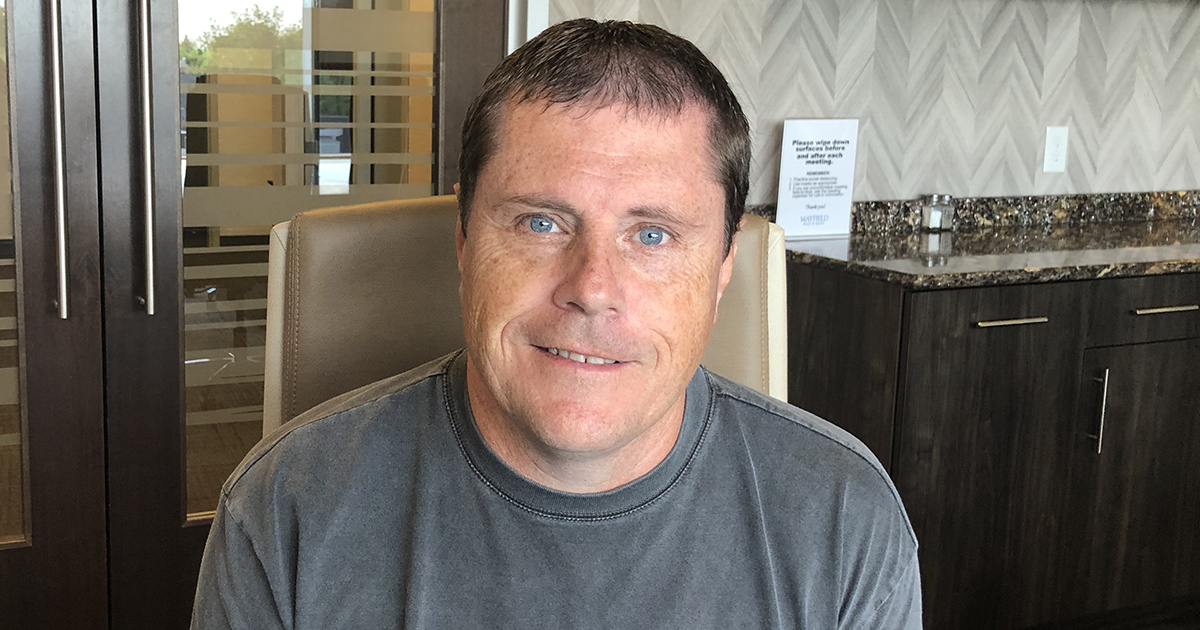
Dan's story
Essential tremor
Deep brain stimulation stops hand tremors for aircraft mechanic
Dan makes his living as an aircraft mechanic – so his hands are pretty important.
The Anderson Township resident first noticed the shaking in his right hand about 20 years ago. It wasn't painful and it didn't affect his left side. The shaking was not severe at first, "more like a tremor."
"The more I put into a job, the more I exerted myself, the worse it would get," Dan recalls. "It happened all the time. The last five years, it was always there. I couldn't eat with it. At work, there were times when it made it hard to do what I needed to do. And I couldn't write anything. There's no way I could write."

Dan was suffering from essential tremor, a brain disorder that causes a rhythmic trembling of the hands, arms, head, voice, legs or trunk. The progressive condition has a genetic element – Gordon's mother suffered from it as well – and there is no known cure.
Through the first part of 2021, Dan continued to see doctors and explore medications that did not provide lasting relief. Last fall, he was referred to Mayfield Brain & Spine for deep brain stimulation. Known as DBS, the procedure involves implanting a device on the brain that sends electrical signals to brain areas responsible for body movement, potentially helping reduce the symptoms of movement disorders such as essential tremor.
"By regulating the faulty nerve signals that cause the tremors, we can provide relief from the tremors and improve the patient's ability to enjoy life's daily activities," Mayfield neurosurgeon Dr. George Mandybur says. "In Dan's case, the system relieved most of the tremors."
Electrodes are placed on both the left and right sides of the brain through small holes made at the top of the skull. The electrodes are connected by long wires that travel under the skin and down the neck to a battery-powered stimulator under the skin of the chest. When turned on, the stimulator sends electrical pulses to regulate the faulty nerve signals causing tremors and other symptoms.
Once the stimulator is programmed, the patient uses a handheld controller to turn the DBS system on and off. The stimulation settings can be adjusted as a patient's condition changes over time.
Dr. Mandybur says deep brain stimulation can help reduce uncontrolled movements from disorders such as essential tremor or Parkinson's disease. Typically, DBS can make symptoms less severe so that lower medication doses may be used.
"This is another tool we can deploy that can help minimize the effects of uncontrolled movements or side effects from medication," he says. "Deep brain stimulation can be an important part of a holistic treatment for those suffering from movement disorders."
Dr. Mandybur implanted the DBS electrodes on Dan's brain in March at The Jewish Hospital – Mercy Health. Several weeks later, the stimulator was implanted in his chest, and Dan met with Mayfield physical therapist Debbie Moesle to activate the system.
Sitting with a laptop that is connected remotely to Gordon's battery pack, Moesle ran through different levels of the four electrodes implanted in his brain. She then performed a series of simple tests at different levels, including writing and pouring a glass of water.
Once the level is clear that will provide maximum benefits with no unintended effects, the system is activated. Moesle says the positive impact was immediate.
"As soon as we turned it on, you could tell that his hand was still," she says. "We just had to find the right setting. The result has been fantastic."
What kind of relief has Dan seen? Just ask him.
"It's awesome. It's amazing. It has really helped," he says. "I knew that my brain was mis-firing somehow. But now the tremors are gone.""
~ Cliff Peale
Hope Story Disclaimer -"Dan's story" is about one patient's health-care experience. Please bear in mind that because every patient is unique, individual patients may respond to treatment in different ways. Results are influenced by many factors and may vary from patient to patient.

